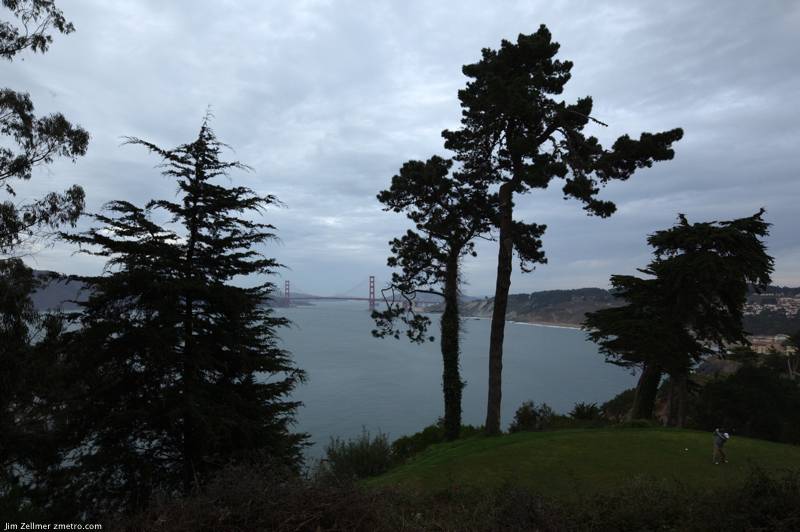Category: Sports
Another Gorgeous Madison Weekend!
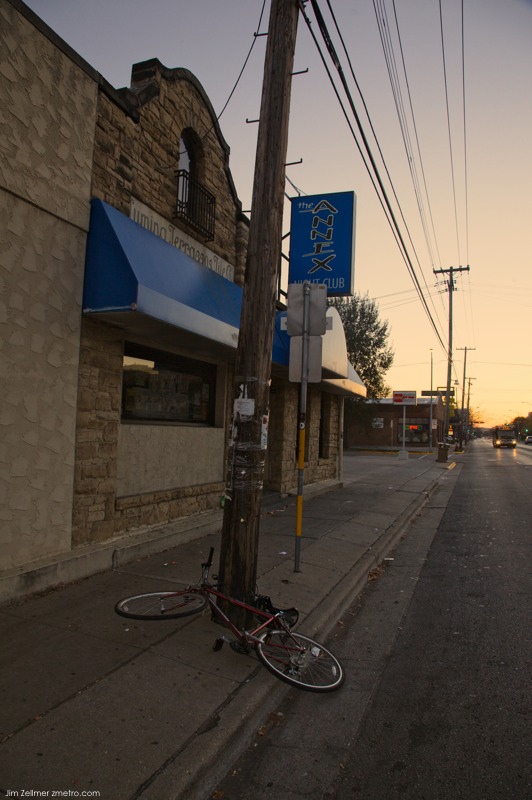
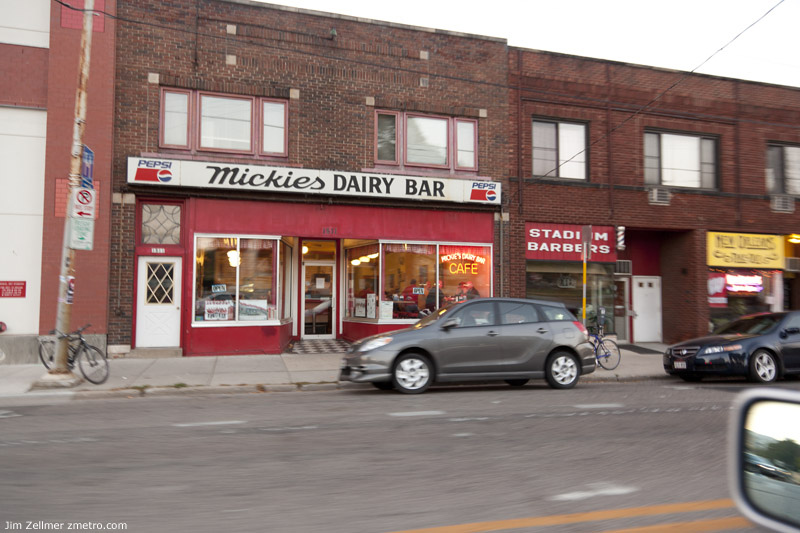
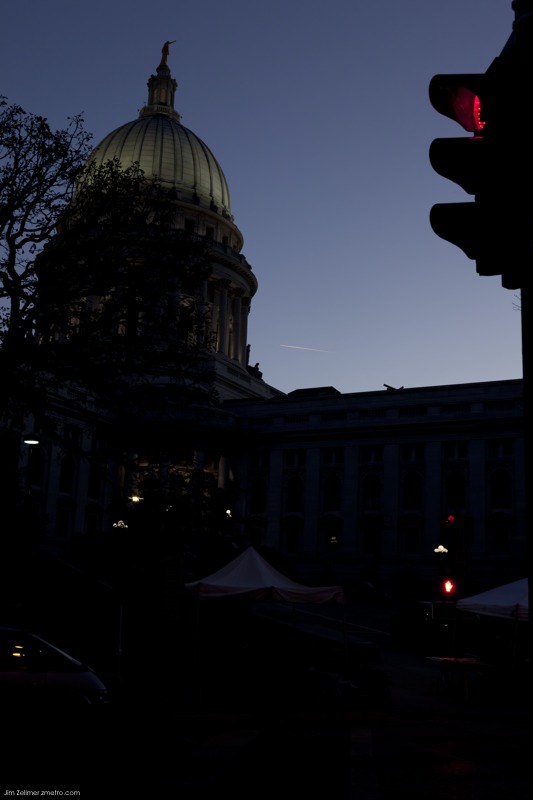
What was the last great football team that played the sport for love and camaraderie, not money or fame?…
It’s late afternoon on a football Sunday in the Northeast, circa 1976. Outside, the sun is setting. Soon your mother will call you up for dinner. But, before then, you want more football. You flip over to NBC and there, in West Coast sunshine, is a team wearing silver and black, playing with a kind of controlled recklessness. Their logo features a pair of crossed swords and a man with an eyepatch; their coach is a shambling, wild-haired guy; their quarterback is nicknamed Snake; and their owner looks like he carries a stiletto in his jacket. You watch them play and before you know it, you’ve fallen in love with this team. Before you know it, you’ve abandoned your Redskins or Eagles or Jets. You’re now an Oakland Raiders fan.
If any of the above resonates for you, then you will want to read Peter Richmond’s new book, “Badasses: The Legend of Snake, Foo, Dr. Death, and John Madden’s Oakland Raiders,” which has just been published by Harper. Richmond, who is the author of numerous books on sports (as well as a Shouts & Murmurs piece about Ken Griffey, Jr. published in The New Yorker), kindly agreed to answer a few questions by e-mail.
Football Saturday Style
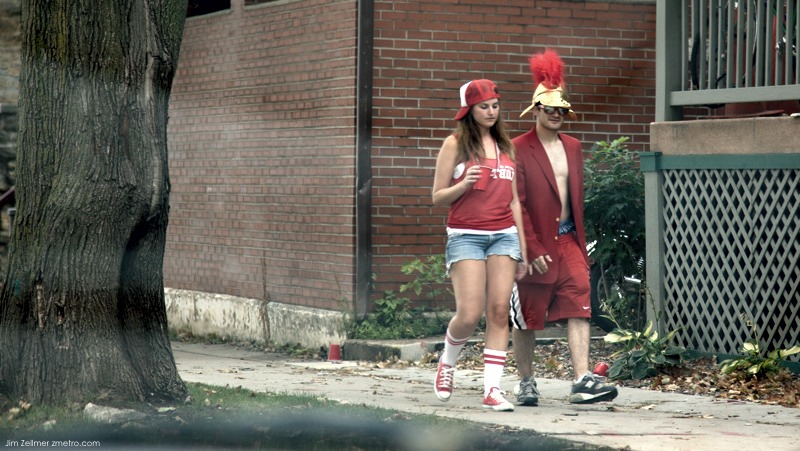
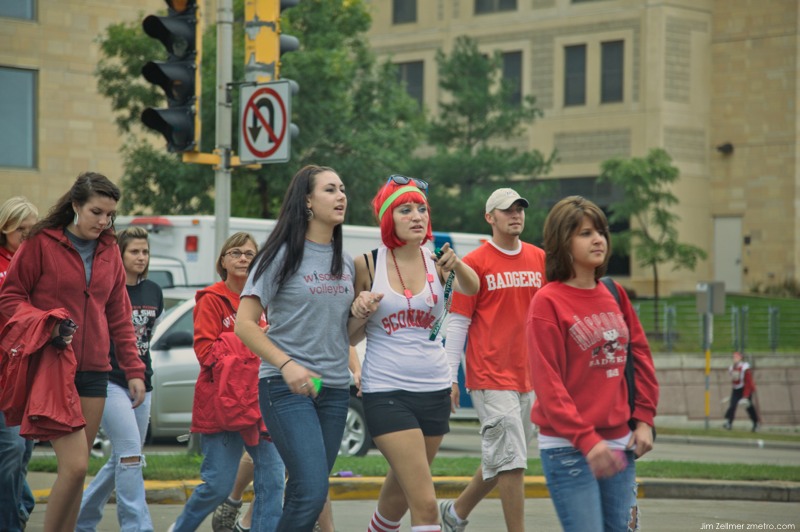
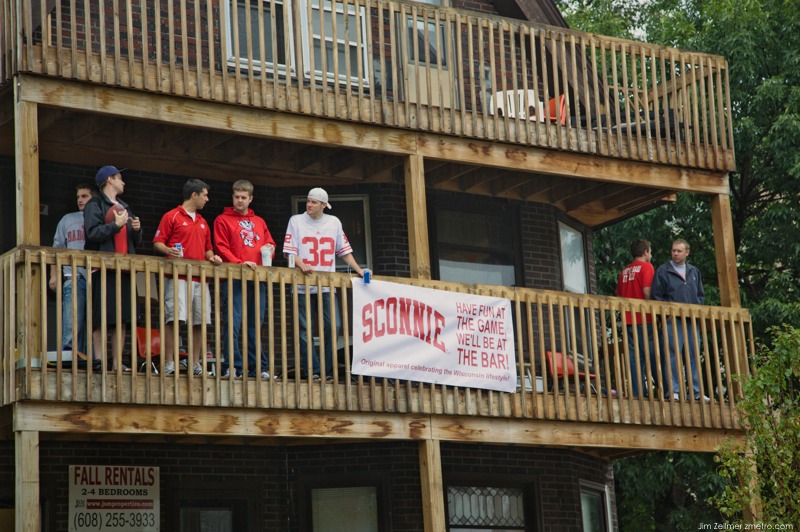
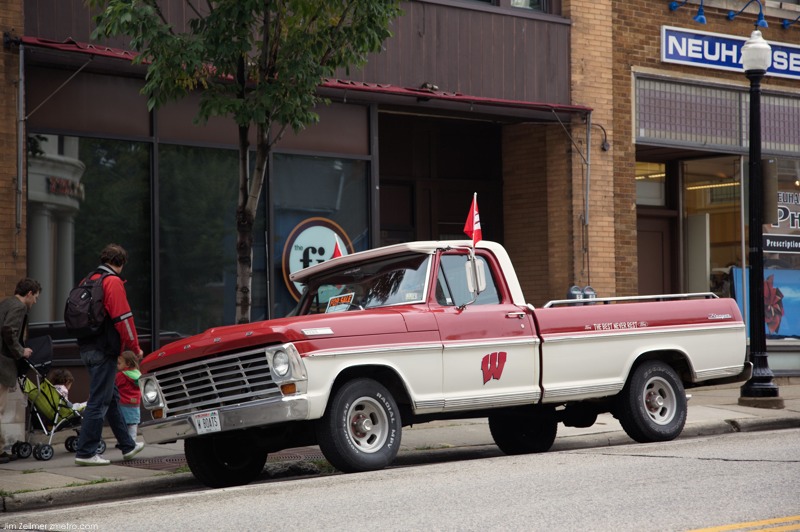
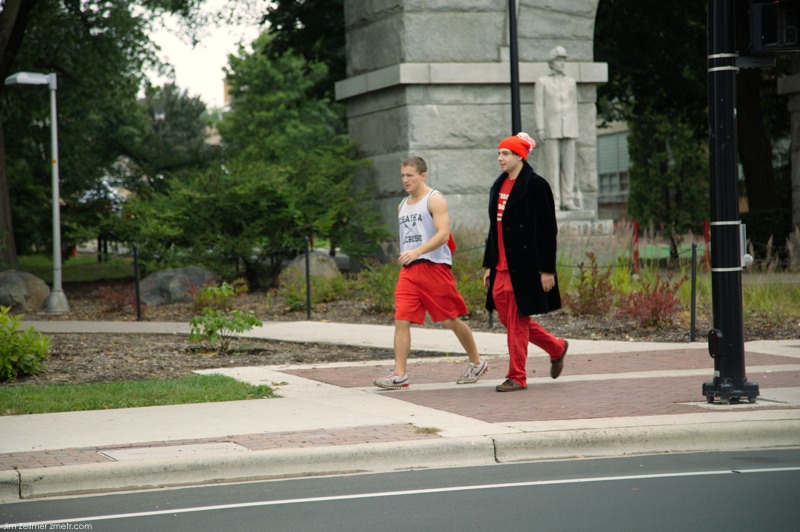
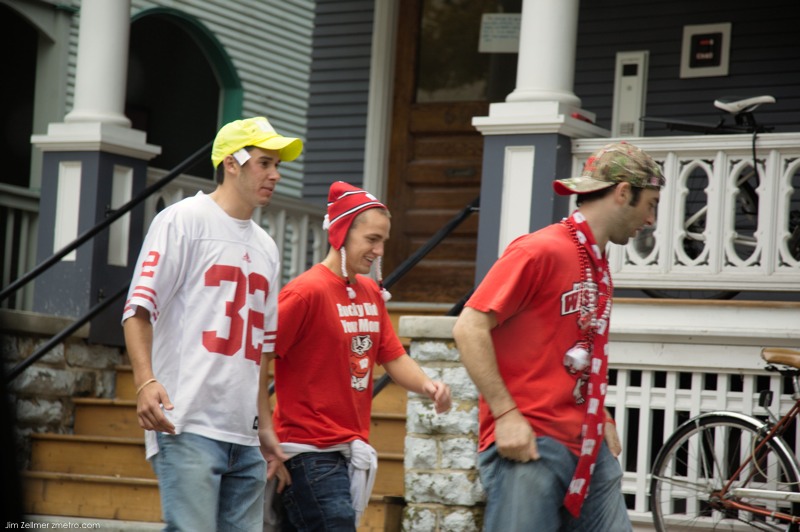
Huge Waves at Mavericks Injure Spectators
The Super Bowl of Surfing lived up to its legend Saturday, and then some. The waves at Mavericks were so massive – the biggest in the history of surf contests, some said – that they caused collateral damage on the sidelines.
Long before South African Chris Bertish tamed a pair of monster swells to win the $50,000 first prize at the seventh Mavericks Surf Contest north of Half Moon Bay, a series of waves crashed into some of the thousands of fans who had flocked to the beach to try to see the action.
Just after 9 a.m. near Pillar Point, 13 people were injured and at least 40 people were knocked off their feet, officials said. Many of them had been standing on a short concrete wall and were thrown into rocks or mud by a surge of water.
A stage set up for an award ceremony toppled, while sound equipment meant for a beach broadcast was swamped.
All City Swim 2009 VR Scene
How David Beats Goliath
When Vivek Ranadivé decided to coach his daughter Anjali’s basketball team, he settled on two principles. The first was that he would never raise his voice. This was National Junior Basketball—the Little League of basketball. The team was made up mostly of twelve-year-olds, and twelve-year-olds, he knew from experience, did not respond well to shouting. He would conduct business on the basketball court, he decided, the same way he conducted business at his software firm. He would speak calmly and softly, and convince the girls of the wisdom of his approach with appeals to reason and common sense.
The second principle was more important. Ranadivé was puzzled by the way Americans played basketball. He is from Mumbai. He grew up with cricket and soccer. He would never forget the first time he saw a basketball game. He thought it was mindless. Team A would score and then immediately retreat to its own end of the court. Team B would inbound the ball and dribble it into Team A’s end, where Team A was patiently waiting. Then the process would reverse itself. A basketball court was ninety-four feet long. But most of the time a team defended only about twenty-four feet of that, conceding the other seventy feet. Occasionally, teams would play a full-court press—that is, they would contest their opponent’s attempt to advance the ball up the court. But they would do it for only a few minutes at a time. It was as if there were a kind of conspiracy in the basketball world about the way the game ought to be played, and Ranadivé thought that that conspiracy had the effect of widening the gap between good teams and weak teams. Good teams, after all, had players who were tall and could dribble and shoot well; they could crisply execute their carefully prepared plays in their opponent’s end. Why, then, did weak teams play in a way that made it easy for good teams to do the very things that made them so good?
Chuck Taylor
Charles Hollis “Chuck” Taylor looked down at his shoes and saw opportunity.
His Spaulding basketball sneakers were killing his feet.
Tired of the pain, the player hobbled into Converse Rubber Co. in 1921 and told owner Marquis Converse what he wanted — a sneaker with a higher ankle and a patch for better support, and a rubber sole with treads that made for a better grip for faster running and breaks.
Converse agreed to cobble one together. The upgraded All-Star shoe was born.
Over the next half-century, Taylor almost single-handedly established the Converse All-Star as the most popular athletic shoe ever.
Known as Chucks in tribute to Taylor, the shoes sold 750 million pairs before Converse was bought by Nike in 2003.
Taylor didn’t just build a brand. He also changed the face of basketball through integration, boosted the careers of some of the game’s most legendary coaches and helped make roundball one of the most popular sports in the world, notes Abraham Aamidor, author of “Chuck Taylor: Converse All Star.”
Faces (and hats) in the Crowd
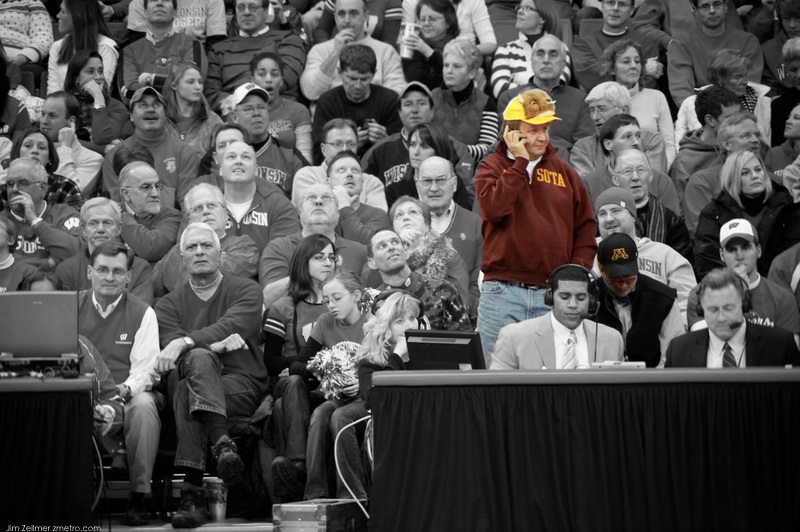
A prominent Gopher basketball fan at last night’s Wisconsin–Minnesota basketball game, which turned into a tough, overtime loss. [Buy this print]
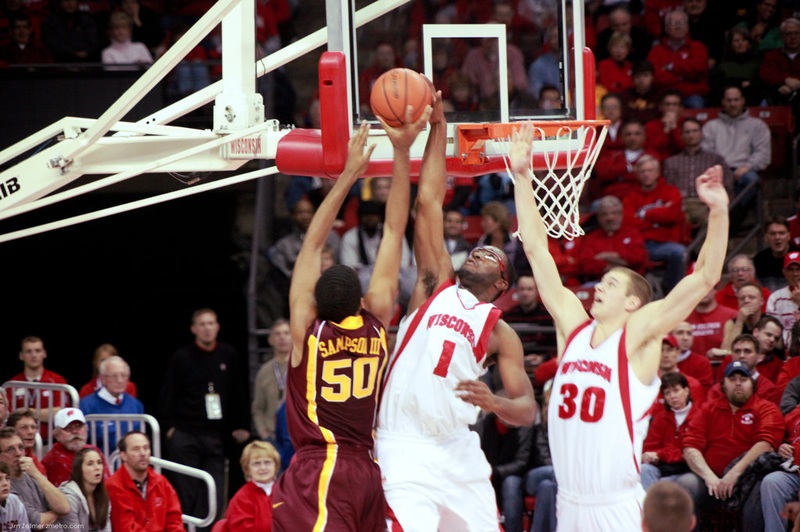 Marcus Landry blocks Ralph Sampson III’s shot (Sampson is a 6’11” freshman while Landry is a 6’7″ Senior). [Buy this print]
Marcus Landry blocks Ralph Sampson III’s shot (Sampson is a 6’11” freshman while Landry is a 6’7″ Senior). [Buy this print]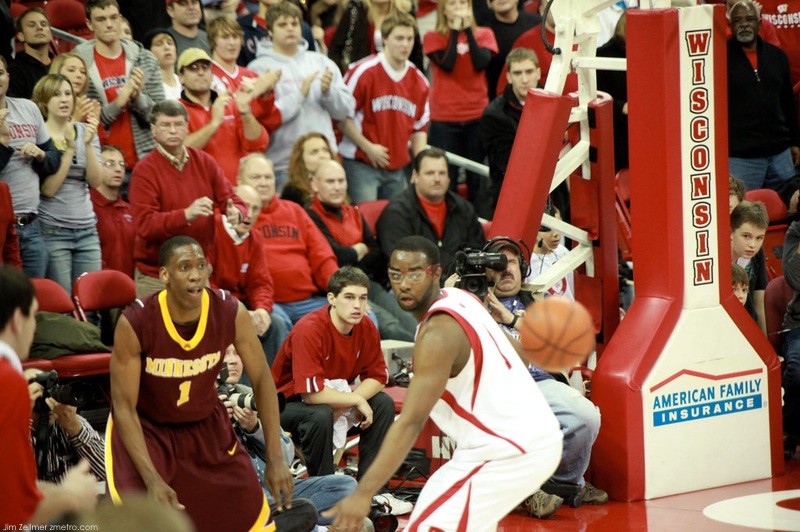
Marcus Landry defending an inbound pass during the waning moments of overtime.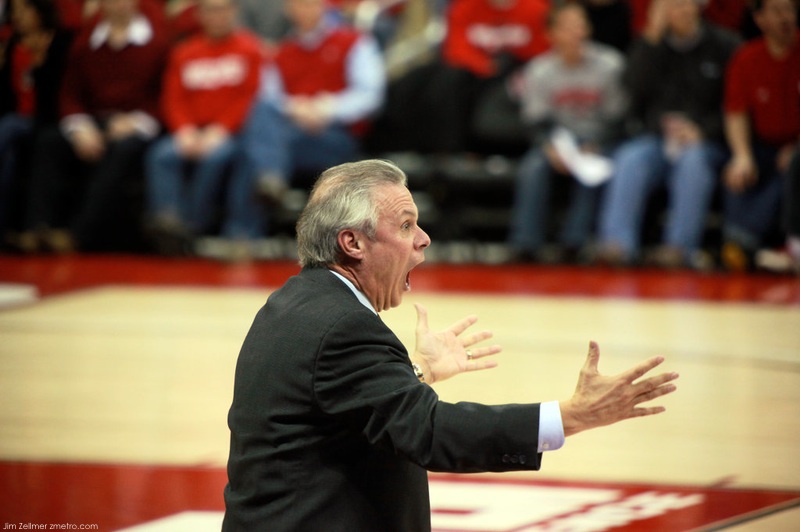
Bo Ryan working the referees [Buy this print]. More photos to come.
A Tough Weekend for UW Men’s Hockey
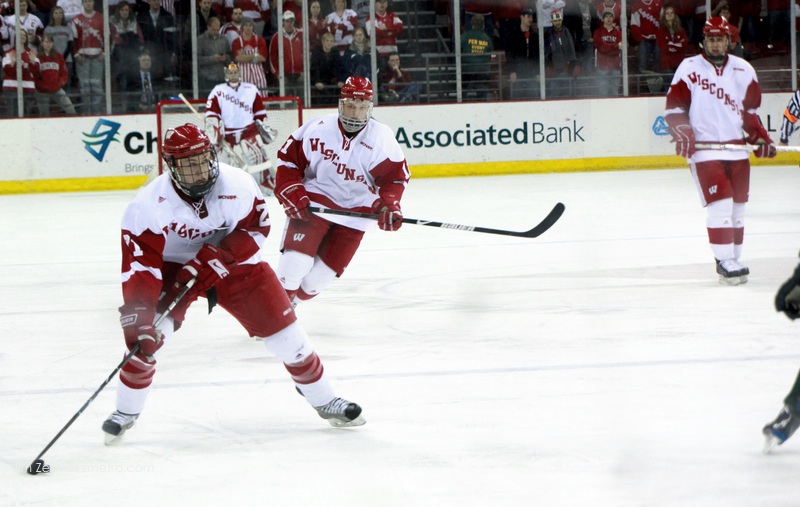
The Badger men’s hockey team dropped two to Northern Michigan. Derek Stepan (above) had a very nifty shorthanded goal Friday night.
